Maritime 48 DVD Package
Get a complete training library in one purchase. This package includes every training program produced by Maritime Training Services. You get the most DVDs, the most savings, and the most training for your money. It’s comprehensive, award-winning, and DNV-approved, so you’ll be in full compliance with the broadest range of regulations and training topics.
Includes 5 year replacement warranty: if programs go out of compliance due to changing regulations, updated versions are provided free of charge. Best price per DVD.
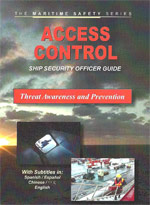
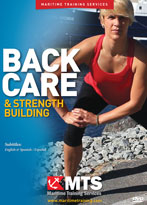
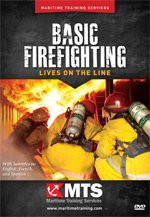
Basic Firefighting: Lives on the Line
Fighting fires on board requires special knowledge and skills. This video outlines the STCW’s 8 essential steps in basic firefighting. Interviews with the maritime fire safety experts and amazing footage from the “Fire Dragon” ensure you and your crew will be prepared when lives are on the line.
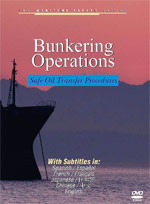
Bunkering Operations: Safe Oil Transfer Procedures
Ensure your crew will know a safe, clean way to transfer oil. This program walks you through specific fuel and oil transfer procedures. Using a documentary style presentation means your crew will see firsthand how to transfer fuel oil into a vessel.
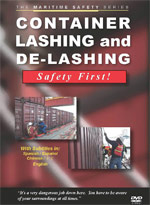
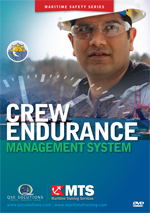
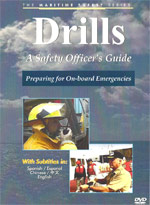
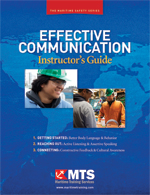
Effective Communication Instructor’s Guide
You don’t need to be a professional trainer or facilitator to guide learners through this program. This 200-page guidebook provides different learning materials you can use to meet your own requirements and your learner’s skill levels. It goes beyond traditional vocabulary drill and word memorization, teaching social skills and basic business communication standards. It’s not an English language instruction program; it is about improving workplace behavior and building positive relationships.

Effective Communication: Active Listening / Assertive Speaking
When the base of workplace communication – listening and speaking – is weak there is higher potential for injuries and property damage. This second installment of a 3-part series also addresses understanding non-verbal cues and using positive assertiveness.

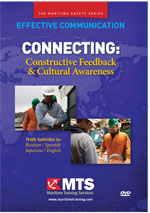
Effective Communication: Constructive Feedback and Cultural Awareness
Learn how cultural differences in communication effect a maritime workplace and the steps you can take to improve these areas. This last installment of a 3-part series addresses learning and practicing basic English, specifically Maritime English, and using feedback in a workplace setting.
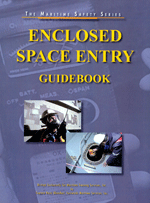
Enclosed Space Entry Guidebook
The Enclosed Space Entry Guidebook is designed to aid every mariner regardless of level or rank. It is full of helpful “Tips” and reminders on how to stay safe, as well as a unique 2-level test: an easier one for those who are new to the training and a harder test for those who are skilled yet need a refresher. Use with any or all of our Enclosed Space Entry training programs to maximize your learning experience.
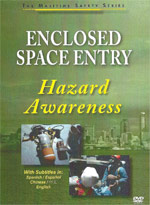
Enclosed Space Entry: Hazard Awareness
Entering an enclosed space is a life threatening operation. Minimize this threat by knowing the specific hazards to avoid and methods to maintain a safe work environment. Learn how to use confined space ventilation and personal protective equipment (PPE) and how to minimize exposure to toxic fumes.
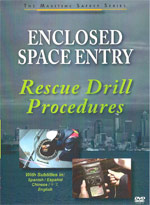
Enclosed Space Entry: Rescue Drill Procedures
Working in enclosed spaces is a dangerous job; when an accident occurs you want a quick and reliable rescue. Watch an actual crew perform specific steps of an efficient rescue drill, from donning SCBA to using rescue equipment, such as ropes and harnesses. Proper training minimizes personal injury to rescuers and the injured crewmember.
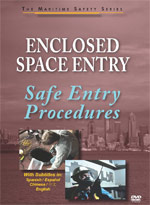
Enclosed Space Entry: Safe Entry Procedures
When it comes to working in an enclosed space, a great start is a safe entry. This program focuses on the elements of a safe entry, including the roles individual team members play. Get a detailed look at specific equipment required, oxygen analyzer and PPE, along with entry preparations that lead to an effective and safe enclosed space entry.
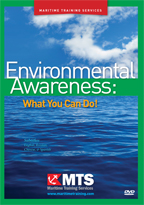
Environmental Awareness
MARPOL and other regulations demonstrate the maritime industry’s firm commitment to environmental responsibility. This video provides seafarers with information about these important industry regulations and the day-to-day activities that can reduce a ship’s environmental impact. Every seafarer can make a difference. Environmental stewardship starts with training and ends with a cleaner earth.
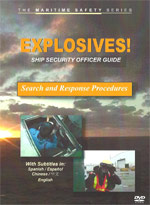
Explosives! Search and Response Procedures
When an explosive device is suspected to be on-board your ship, searching for the device efficiently and knowing what to do if found are critical training elements. This program addresses the threat posed by explosives on-board ships, used mainly by terrorist organizations, and the security measures taken in countering terrorism on a vessel.
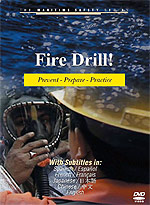
Fire Drill! Prevent, Prepare, Practice
Make sure your firefighting team knows how to fight a fire. Learn ways to improve fire safety at sea through preparing and conducting fire drills. With the assistance of the United States Coast Guard, this program addresses topics from causes of fires to firefighting procedures, and is essential to any vessel’s fire safety training.
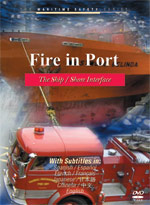
Fire In Port: The Ship / Shore Interface
Get the most out of your fire fighting efforts. This program addresses the importance of developing a specific procedure for fighting a fire while a vessel is moored and the difference between at sea fire fighting and in port fire fighting. Watch a real time drill performed by a ship’s crew with assistance from an actual fire department.
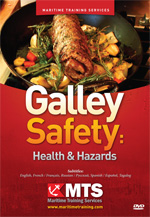
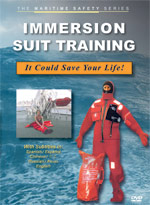
Immersion Suit Training: It Could Save Your Life!
How fast can you get into your suit?
This program focuses on the importance of shipboard immersion suit availability and immersion suit testing. Learn the essentials, like the proper procedure for purging excess air from the suit and safely entering the water.
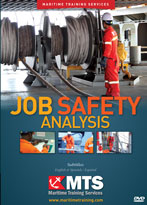
Job Safety Analysis
Job Safety Analysis (JSA) looks very different depending on your job site, but they all have the same three essential parts: Identifying the steps of a job, the potential dangers at each step, and how best to avoid these dangers. This video covers the entire JSA process and highlights what you need to know to make your job safer, easier and more efficient.
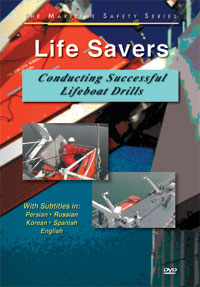
Life Savers: Conducting Successful Lifeboat Drills
Ten percent of all maritime casualties occur during lifeboat drills. Make sure your crew isn’t part of this statistic through proper training and execution. This program focuses on knowing what to do during lifeboat operations to minimizes casualties not only during drills, but also during the event of an actual emergency.
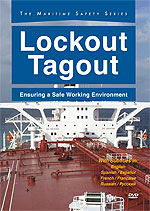
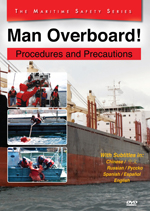
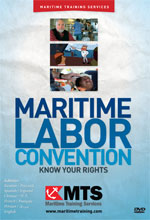
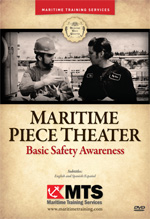
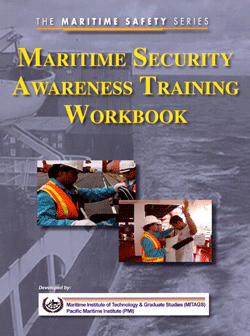
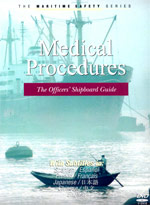
Medical Procedures: The Officers’ Shipboard Guide
Having a crew well trained in basic medical procedures saves lives. This program explains and illustrates the basics of maritime medicine: from everyday procedures (checking vital signs and correctly using sterile equipment) to emergency procedures (CPR, setting an IV line, and suturing wounds).
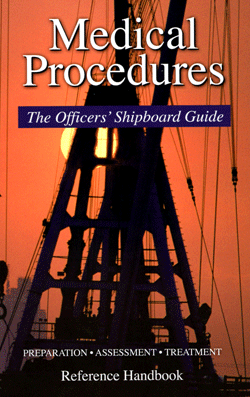
Medical Procedures: The Officers’ Shipboard Guidebook
Don’t let unnecessary casualties happen. A lack of medical knowledge leads to the avoidable worsening of injuries. With three easy to follow sections, this book walks you through preparing, assessing, and treating several common injuries. This book was authored in conjunction with the program Medical Procedures and addresses its subject matter in greater detail.
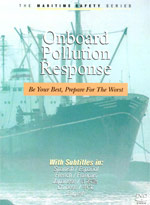
Onboard Pollution Response: Be Your Best, Prepare For The Worst
Know what to do to prevent oil spills and what steps you can take to minimize contamination. Learn correct procedures for an effective oil spill response and how to effectively prepare and conduct drills. This program also addresses the importance of following SOPEP guidelines, STCW standards, and MARPOL regulations.
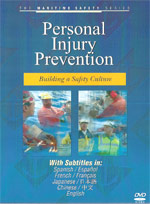
Personal Injury Prevention: Building a Safety Culture
Promoting a safe work environment saves money and lives. This program features the insight and commentary of Richard Bracken, author of Personal Injury Prevention: A Guide to Good Practice, with an emphasis on STCW convention and the ISM code. Learn the importance of good maritime housekeeping and a Safety Management System.
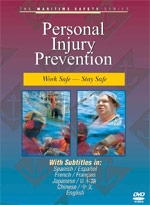
Personal Injury Prevention: Work Safe, Stay Safe
Don’t let a lack of focus cause personal injury. This program features the insight and commentary of Richard Bracken, author of Personal Injury Prevention: A Guide to Good Practice, and focuses on everyday practices that can be improved with a greater attention to personal safety and injury prevention.
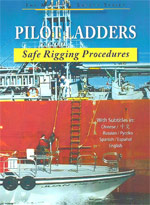
Pilot Ladders: Safe Rigging Procedures
Learn the dangers of pilot ladder operations at sea and how to use a pilot ladder safely. With the help of the Puget Sound Pilots Association, this program focuses on safe and properly rigged ladders, pilot ladder construction, and other details ship pilots should look for before attempting to board a ship.
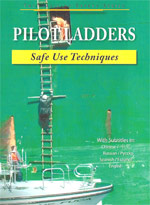
Pilot Ladders: Safe Use Techniques
A calm pilot is a good pilot. With the help of the Puget Sound Pilots Association, this program will focus on communications between the pilot and pilot ship crew, pilot ladder operation familiarization, and other details ship pilots should look for before attempting to board a ship.
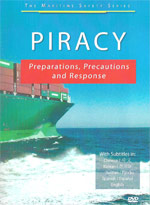
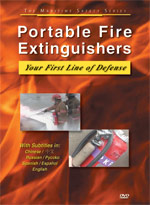
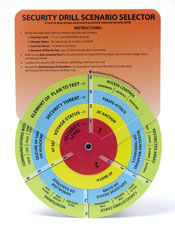
Security Drill Scenario Selector
Based on the ISPS Code, the Scenario Selector is crafted to assist the SSO in designing and recording quarterly onboard security drills. The user can choose from 18 variables to test in four major groups: security level, voyage status, security threat, and element of security plan. The result is more than 300 possible security drills, each a unique and valuable new training opportunity.
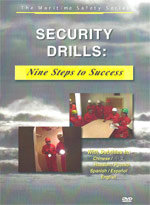
Security Drills: Nine Steps to Success
Security Drills are now a required part of life at sea. Port State requires them, your ship security plan references them, and your Ship Security Officer (SSO) must perform them. But what do they look like, who is involved, where do they take place — and will Port State approve?
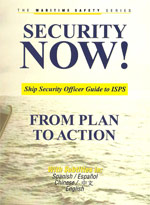
Security NOW! From Plan to Action
The Security Plan is useless until you put it into action. Learn how to implement effective shipboard security through specific guidelines, including the ISPS code and a Vessel Security Plan. Learn what the US Coast Guard wants to see on board your ship to enhance security and learn what the new ISPS code security levels mean for your ship.
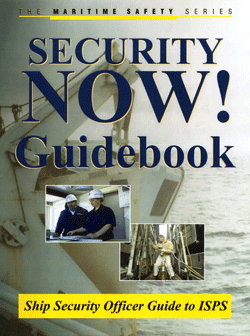
Security Now! Guidebook
A great resource for your Ship Security Officer. Go in depth on various aspects of shipboard security, from security levels to your Ship Security Plan and company obligations. Coupled with the Security NOW! series, this book promotes an efficient ship security team by addressing ISPS code specific topics and can be used as a guide to improve the overall security on board your vessel.
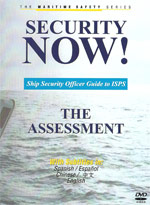
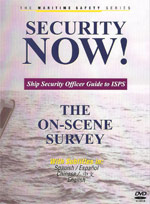
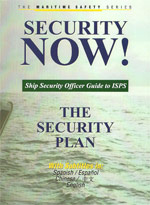
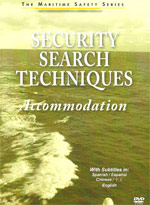
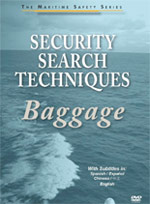
Security Search Techniques: Baggage
Minimize the presence of contraband on your ship. An efficient baggage search is a key component in every Ship Security Plan. This program focuses on meeting ISPS code and MARSEC guidelines while exercising courtesy and respecting the rights of boarding personnel.
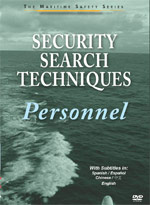
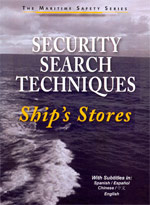
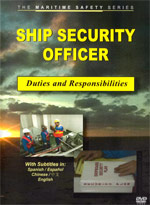
Ship Security Officer: Duties and Responsibilities
Without an effective ship security your vessel is vulnerable to attack; minimize this threat by having a knowledgeable Ship Security Officer. Heightened ship security requires planning, coordination and new responsibilities. The Ship Security Officer is an essential element to ISPS code compliance.
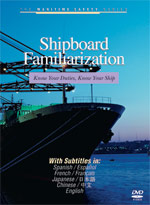
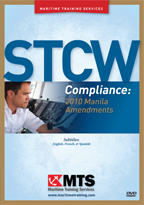
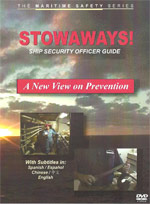
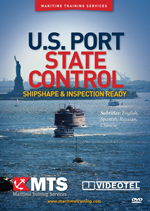
US Port State Control: Shipshape and Inspection Ready
Foreign flag vessels entering US waters should be aware of the United States Port State Control process, and be prepared for USCG inspections, immigration and agricultural inspections.
Produced with the assistance of US Department of Homeland Security.
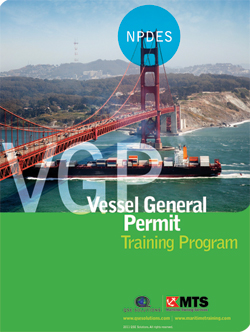
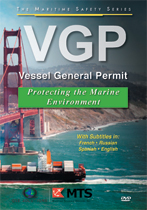
Vessel General Permit: Protecting the Marine Environment
If you want to leave port you have to show compliance to new requirements set by VGP. This program and training guide book show you clear and simple steps to achieve compliance. Integrate the inspection, monitoring and reporting required by VGP into your ongoing best practices and existing Safety Management Systems.
